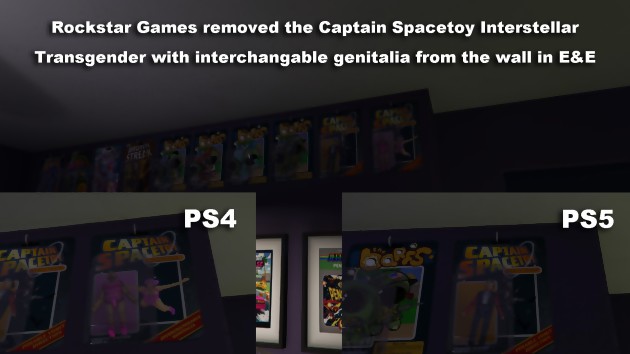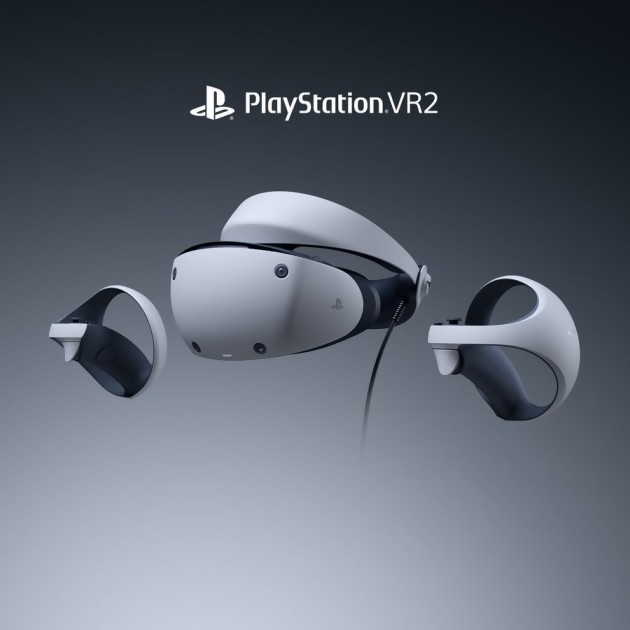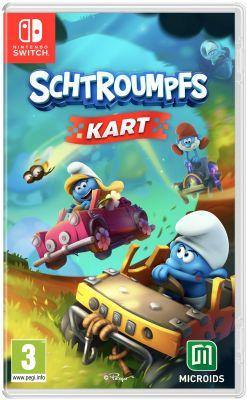 God of War Ragnarök begins exactly as one would expect. We therefore find Kratos and Atreus, slightly older, still in conflict with the deities of Nordic mythology, starting with Freya, who has not forgiven them for the fate reserved for her son Baldur. In this hostile context, Atreus convinces his father to go in search of Tyr, an ancient god, the only one capable of prevailing against Odin in the final battle of Ragnarök. Of course, this is only the starting point of a much larger odyssey, but we will come back to it later. The first hours therefore look like a giant tutorial in which we relearn the basics of gameplay, a little surprised that Kratos and Atreus have lost all their equipment and powers. The game gives a justification for this state of affairs, but it is still quite light, and will probably make you smile a little slyly...
God of War Ragnarök begins exactly as one would expect. We therefore find Kratos and Atreus, slightly older, still in conflict with the deities of Nordic mythology, starting with Freya, who has not forgiven them for the fate reserved for her son Baldur. In this hostile context, Atreus convinces his father to go in search of Tyr, an ancient god, the only one capable of prevailing against Odin in the final battle of Ragnarök. Of course, this is only the starting point of a much larger odyssey, but we will come back to it later. The first hours therefore look like a giant tutorial in which we relearn the basics of gameplay, a little surprised that Kratos and Atreus have lost all their equipment and powers. The game gives a justification for this state of affairs, but it is still quite light, and will probably make you smile a little slyly...
Very quickly, some novelties appear, such as the new use of the blades of Chaos. The chains of the latter are now used as a "grab" to climb up or down quickly along the walls, or to swing at attachment points. They also allow you to grab elements of the decor (stone columns, etc.) and make them move, thus unblocking a passage. We also discover the possibility of freezing the ax or igniting the blades, which initially serves more to solve some puzzles (the famous frozen water geyser seen in the trailer) than to fight. And that's about it. The first 5/6 hours therefore take place without real wonder, and above all on the model of the first episode. The construction is really similar, as are the environments visited. The game begins in the kingdom of Midgard, certainly transfigured by a harsh winter, but which we already knew. The second place revealed is new, but locks you up fairly quickly in settings that are also very close to the first part (you will understand). At this stage of the adventure, the specter of "God of War 1.5" extends its disturbing shadow... And then, suddenly the game takes off, finally shows what it really has in its belly. From there, the ascent will not stop.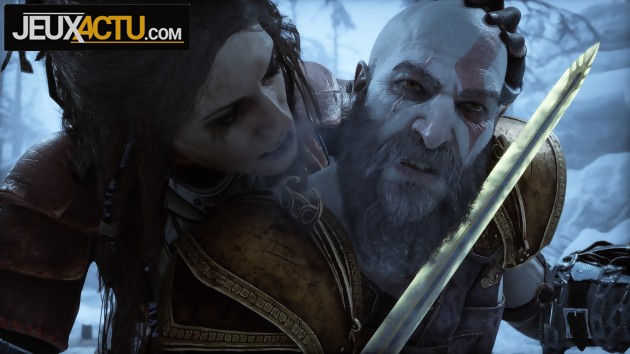
A MAGICAL FLIGHT
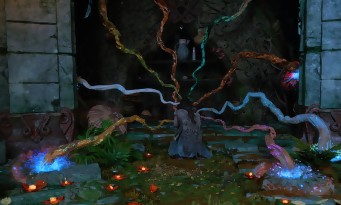 From a scriptwriting point of view, the adventure takes a sudden turn, and the stakes and situations increase. We will not reveal details here, but understand one thing: God of War Ragnarök does not only tell the story of Kratos and his son Atreus, it is a real odyssey that immerses you in the heart of Norse mythology. Some characters from the first part take on a crazy and unsuspected thickness, while the new faces also have an exciting, complex, anything but Manichaean destiny. And all this takes on an insane scale over the hours, making each new encounter important, each new place incredibly attractive. On the gameplay side, things also improve after the prologue. We discover new ways to use the axe, whether for combat or exploration, but also inventive mechanics based on chain reactions, for example. The most interesting thing is that some skills are specific to a single realm, and are not found elsewhere, thus avoiding the pitfall of repetition ad nauseam.
From a scriptwriting point of view, the adventure takes a sudden turn, and the stakes and situations increase. We will not reveal details here, but understand one thing: God of War Ragnarök does not only tell the story of Kratos and his son Atreus, it is a real odyssey that immerses you in the heart of Norse mythology. Some characters from the first part take on a crazy and unsuspected thickness, while the new faces also have an exciting, complex, anything but Manichaean destiny. And all this takes on an insane scale over the hours, making each new encounter important, each new place incredibly attractive. On the gameplay side, things also improve after the prologue. We discover new ways to use the axe, whether for combat or exploration, but also inventive mechanics based on chain reactions, for example. The most interesting thing is that some skills are specific to a single realm, and are not found elsewhere, thus avoiding the pitfall of repetition ad nauseam.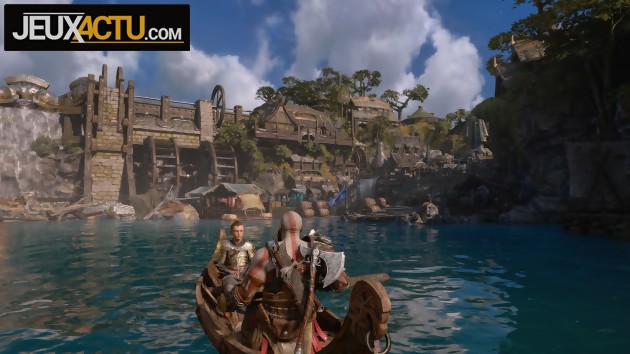
Likewise, the novelties glimpsed at the start of the game (such as the grapple function of the blades of chaos) finally take on their full meaning. The ability to traverse sets very quickly definitely energizes exploration. In combat, grappling hooks also add verticality, with the need to move quickly from one "floor" to another of the decor to track down enemies, or simply afford a short respite. The interaction with your environment is also more advanced, with the possibility of grabbing and throwing at your enemies trees, rocks, columns, etc. You can also destroy certain elements, for example to dislodge monsters clinging to heights. All this gives a crazy potato to the clashes, which turn into a real murderous choreography where you change weapons and techniques on the fly, depending on the situation. For those who have a good command of all the means made available, it's a treat. Small flat, however: as in the first episode, the blows with the fists, feet and the shield remain by far the most effective to ring the opponents quickly, in order to seize them (with R3) to strike them a fatal blow. We are therefore tempted to abuse these techniques, which sometimes makes the fights repetitive. The game nevertheless has a "parade" to this behavior, with the presence of certain "protected" adversaries, against whom it is imperative to use fire or ice. Still, in any case, given the intensity of the fighting, we are forced to give everything we have. But remember all the same the effectiveness of strikes with bare hands, it can be useful...
FINALLY BOSSES!
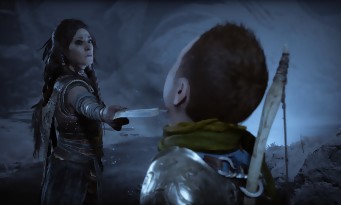 Let's talk bestiary. That of the first part had been decried for its lack of variety, with in particular trolls in excess. Again, God of Ragnarök worries during the first hours of play, with certainly new monsters, but always this feeling that some come back too often. Fortunately, things improve thereafter, with a pharaonic quantity of new enemies, and a return of the best creatures of the first episode. But above all, this sequel finally offers boss fights worthy of the names. Do you remember the big dragon in the first opus? Know that this is nothing compared to the colossal monsters that you will come across, either over the course of the adventure or in side quests. It is also strongly advised to venture off the beaten track, to render services to the inhabitants of the kingdoms, because your helpfulness will be rewarded. Some secondary missions open up whole sections of each map, where you will find a lot of puzzles to solve, objects or treasures to collect. We can thus spend hours “losing ourselves” in the kingdoms, to accomplish these quests, which are certainly annexes, but very well scripted overall (sometimes even with a little morality at stake). It's also a good way to boost your characters, to find new equipment. The RPG aspect more or less takes up the components of the first part, with skills to unlock, runes to install on your weapons to obtain special powers, amulets to improve your stats, etc. In terms of novelties, we note the appearance of “powers” for the shield, or the possibility of modifying certain skills. All in all, nothing transcendent, but on the other hand expect a lot of skills to unlock... Even if, on closer inspection, some are much more attractive than others, so that we are tempted to keep them throughout the adventure.
Let's talk bestiary. That of the first part had been decried for its lack of variety, with in particular trolls in excess. Again, God of Ragnarök worries during the first hours of play, with certainly new monsters, but always this feeling that some come back too often. Fortunately, things improve thereafter, with a pharaonic quantity of new enemies, and a return of the best creatures of the first episode. But above all, this sequel finally offers boss fights worthy of the names. Do you remember the big dragon in the first opus? Know that this is nothing compared to the colossal monsters that you will come across, either over the course of the adventure or in side quests. It is also strongly advised to venture off the beaten track, to render services to the inhabitants of the kingdoms, because your helpfulness will be rewarded. Some secondary missions open up whole sections of each map, where you will find a lot of puzzles to solve, objects or treasures to collect. We can thus spend hours “losing ourselves” in the kingdoms, to accomplish these quests, which are certainly annexes, but very well scripted overall (sometimes even with a little morality at stake). It's also a good way to boost your characters, to find new equipment. The RPG aspect more or less takes up the components of the first part, with skills to unlock, runes to install on your weapons to obtain special powers, amulets to improve your stats, etc. In terms of novelties, we note the appearance of “powers” for the shield, or the possibility of modifying certain skills. All in all, nothing transcendent, but on the other hand expect a lot of skills to unlock... Even if, on closer inspection, some are much more attractive than others, so that we are tempted to keep them throughout the adventure. 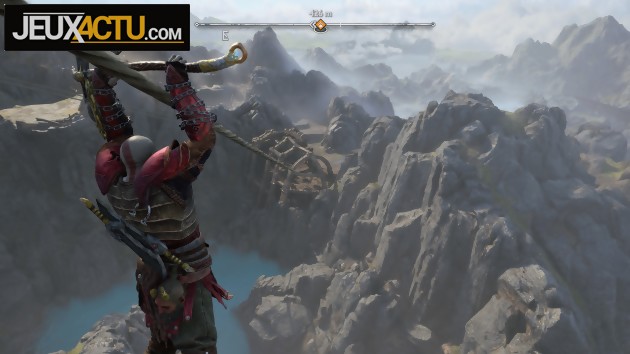
A CRAZY STAGE
 Visually, God of War Ragnarök is in line with its predecessor. The game must run on both PS4 and PS5, the technical gap is not huge, but the graphics are still as attractive as ever. Above all, the decorations turn out to be much more varied and organic. You will thus cross forests, deserts, snowy expanses, and also quantities of very detailed interiors. Life is also much more present, with many critters watching you or wandering here and there. In a way, the climate of each place is palpable, and the change of scenery guaranteed. Admittedly, we still find a lot of places already visited in the first part, but these have completely changed in appearance, like the famous lake of 9, now frozen, which we survey aboard a sled. The fights are also an opportunity for sumptuous visual effects that fill the screen, all without the slightest slowdown. But it is especially in terms of staging that this God of War Ragnarök impresses, with really very realistic facial expressions, which perfectly transcribe the emotions of the characters, and clearly contribute to the credibility of the scenes. Some fights, especially against the bosses, also put a pie, as the camera twirls around to highlight the ferocity of the clashes.
Visually, God of War Ragnarök is in line with its predecessor. The game must run on both PS4 and PS5, the technical gap is not huge, but the graphics are still as attractive as ever. Above all, the decorations turn out to be much more varied and organic. You will thus cross forests, deserts, snowy expanses, and also quantities of very detailed interiors. Life is also much more present, with many critters watching you or wandering here and there. In a way, the climate of each place is palpable, and the change of scenery guaranteed. Admittedly, we still find a lot of places already visited in the first part, but these have completely changed in appearance, like the famous lake of 9, now frozen, which we survey aboard a sled. The fights are also an opportunity for sumptuous visual effects that fill the screen, all without the slightest slowdown. But it is especially in terms of staging that this God of War Ragnarök impresses, with really very realistic facial expressions, which perfectly transcribe the emotions of the characters, and clearly contribute to the credibility of the scenes. Some fights, especially against the bosses, also put a pie, as the camera twirls around to highlight the ferocity of the clashes.
Above all, the decorations turn out to be much more varied and organic. You will thus cross forests, deserts, snowy expanses, and also quantities of very detailed interiors. Life is also much more present, with many critters watching you or wandering here and there.
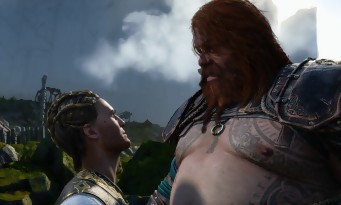 Brutal kills are spectacular too, with some seriously awesome new animations. And like its predecessor, God of War Ragnarök takes place entirely in a sequence shot, without cutting, which is a real feat given the script construction. In short, it's a very good visual job, supported by an epic soundtrack and convincing French dubbing, even if the subtitled original version remains more accomplished (a matter of taste). On the DualSense side, haptic feedback is solicited everywhere, but shines especially when it comes to transcribing the sensation of repelling water when paddling. The resistance of the force feedback triggers is not overly stressed, probably to avoid tiring the fingers, since we spend our time pressing these slice buttons. Not much to reproach the game on the technical level therefore, if not a certain lack of ergonomics of the menus, always a little confused and overloaded, in the same way as the map, not always very readable. The command to turn around (very important in combat) is also assigned to two impractical and instinctive key combinations. And even if you can deport the flip-flop on the touchpad, it's not a panacea either. Finally, note the presence of some bugs in this test version, some anecdotal (missing sounds), others more disabling (scripts that do not start) and which required a few restarts of the game. Hopefully all of this will be fixed with a patch day one.
Brutal kills are spectacular too, with some seriously awesome new animations. And like its predecessor, God of War Ragnarök takes place entirely in a sequence shot, without cutting, which is a real feat given the script construction. In short, it's a very good visual job, supported by an epic soundtrack and convincing French dubbing, even if the subtitled original version remains more accomplished (a matter of taste). On the DualSense side, haptic feedback is solicited everywhere, but shines especially when it comes to transcribing the sensation of repelling water when paddling. The resistance of the force feedback triggers is not overly stressed, probably to avoid tiring the fingers, since we spend our time pressing these slice buttons. Not much to reproach the game on the technical level therefore, if not a certain lack of ergonomics of the menus, always a little confused and overloaded, in the same way as the map, not always very readable. The command to turn around (very important in combat) is also assigned to two impractical and instinctive key combinations. And even if you can deport the flip-flop on the touchpad, it's not a panacea either. Finally, note the presence of some bugs in this test version, some anecdotal (missing sounds), others more disabling (scripts that do not start) and which required a few restarts of the game. Hopefully all of this will be fixed with a patch day one.




